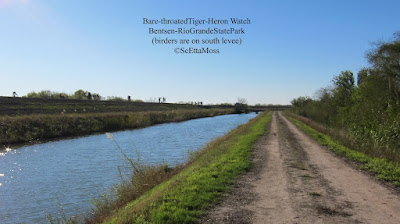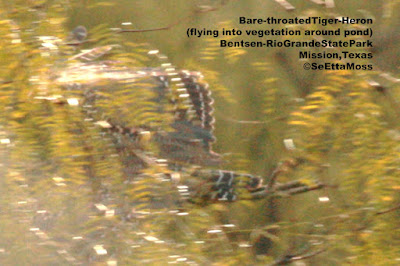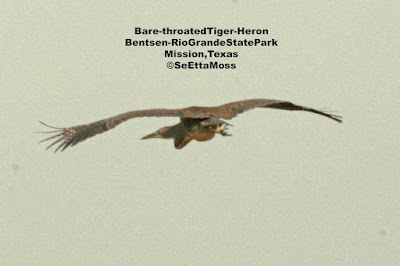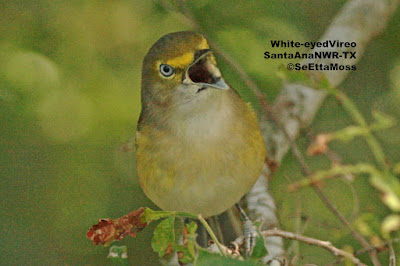BARE-THROATED TIGER-HERON--saw it again

I was hoping to get some video of the Bentsen Tiger-Heron so walked out on the levee south of the Bentsen-Rio Grande State Park a little before 4 pm today and the top pic is what I saw. The south levee is on the left where the birders are standing--it is higher and affords better views. The trail on the north levee is directly ahead and some of the vegetation on the north side of the cnal in the park's re-veg area is visible on the far right. Over the next hour or so a lot more birders arrived increasing to about 50 at the most. This time I stood on the south levee just south of the small bridge on the side so I had a better chance of being to the west of the bird which would be the best light. Around 6:15 when we still had not seen the bird, I moved to the west side so I could have a good view of the dirt road that runs north from the bridge as one of last night's birders told me they had seen the bird on that road and flying to/from (?) the grass field east of it. I was...

















